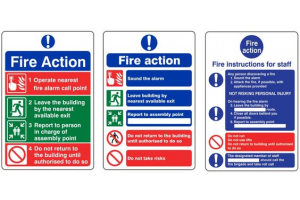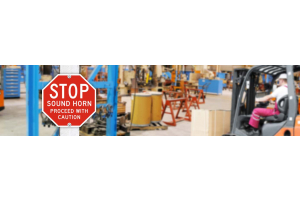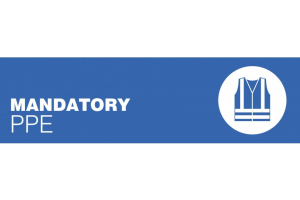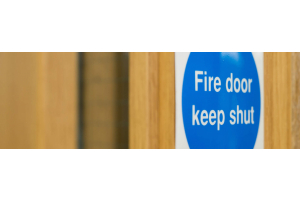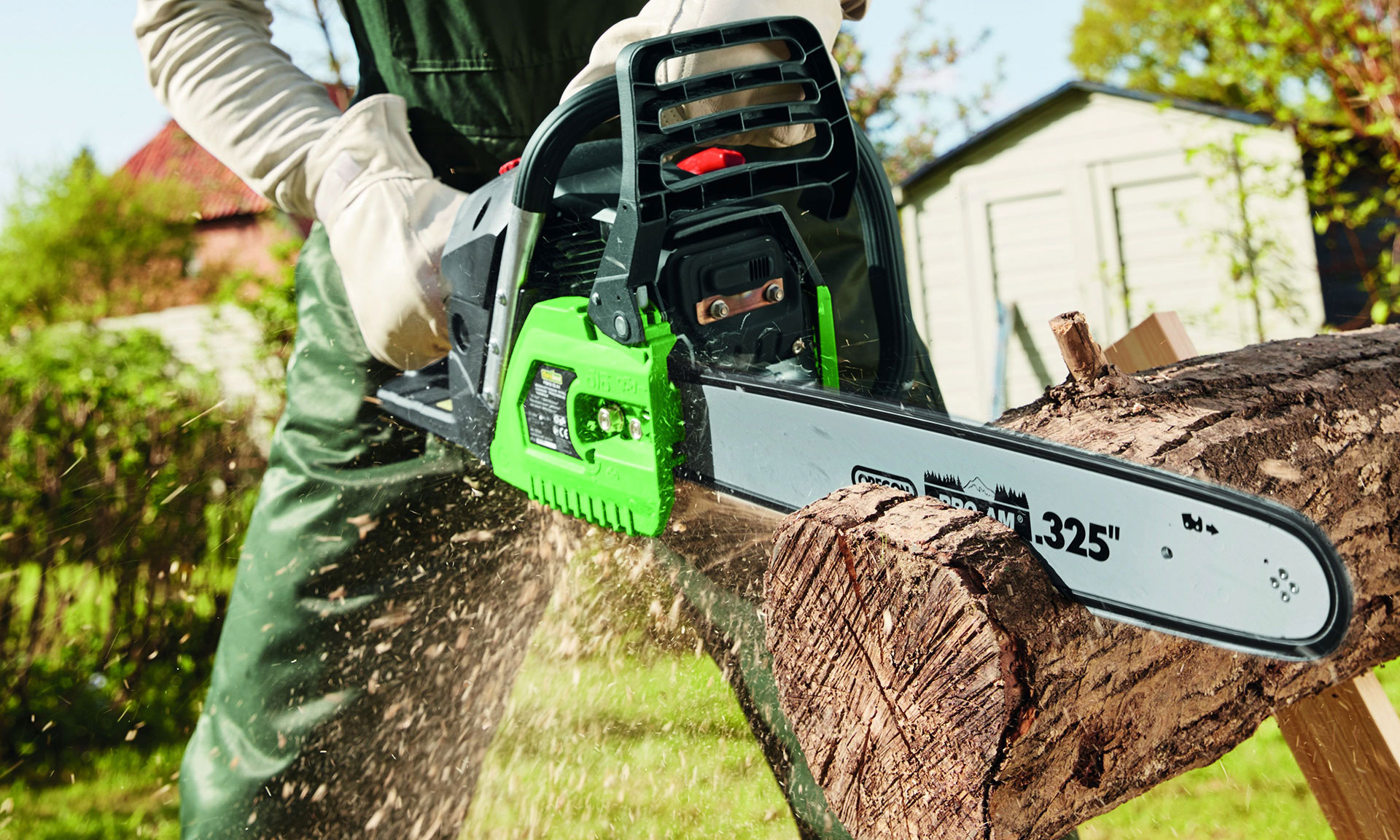
Maintaining a chainsaw
Proper maintenance is essential if a chainsaw is to be safe to use and will provide protection against ill health from excessive noise and vibration. Maintain the saw in accordance with the manufacturer’s recommendations with all the safety devices in efficient working order and all guards in place. It will need to be regularly serviced by someone who is competent to do so.
Operators need to be trained in the correct chain-sharpening techniques and chain and guide bar maintenance to keep the saw in safe working condition. Operators need to report any damage or excessive wear from daily checks on the following:
- on/off switch;
- chain brake;
- chain catcher;
- silencer;
- guide bar, drive sprocket and chain links;
- side plate, front and rear hand guards;
- anti-vibration mounts;
- starting cord for correct tension.
PPE
Employers have duties concerning the provision and use of personal protective equipment (PPE) at work. PPE is equipment that will protect the user against health or safety risks at work. It can include items such as safety helmets, gloves, eye protection, high-visibility clothing, safety footwear, safety harnesses and respiratory protective equipment.
PPE should only be used as a last resort, ie when all other ways to eliminate or reduce risks have been considered. When selecting PPE, make sure it’s CE marked and it suits the user in terms of size, fit etc. If more than one item of PPE is worn at the same time, make sure they can be used together, eg wearing safety glasses may disturb the seal of a respirator, causing air leaks. Make sure that users of PPE are instructed and trained on its use and it is maintained and available at all times. Protective clothing complying with the appropriate standard should provide a consistent level of resistance to chainsaw cut-through. Other clothing worn with the PPE needs to be close fitting and non-snagging. Note: No protective equipment can ensure 100% protection against cutting by a hand-held chainsaw.
Relevant PPE standards:
Safety helmet to EN 397. It is recommended that arborists working from a rope and harness use a mountaineering style helmet. Hearing protection to EN 352-1. Eye protection: Mesh visors to EN 1731 or safety glasses to EN 166. Upper body protection: Chainsaw jackets to BS EN 381-11. Chainsaw jackets can provide additional protection where operators are at increased risk (eg trainees, unavoidable use of a chainsaw above chest height). However, this needs to be weighed against increased heat stress generated by physical exertion (eg working from a rope and harness). Gloves: The use of appropriate gloves is recommended under most circumstances. The type of glove will depend on a risk assessment of the task and machine. Consider the need for protection from cuts from the chainsaw, thorny material and cold/wet conditions. Where chainsaw gloves are required these need to be to EN 381-7.
Leg protection to EN 381-5. (All-round protection is recommended for arborists working in trees and occasional users, such as those working in agriculture.) Chainsaw boots to BS EN ISO 20345:2004 and bearing a shield depicting a chainsaw to show compliance with EN 381-3. (For occasional users working on even ground where there is little risk of tripping or snagging on undergrowth or brash, protective gaiters conforming to EN 381-9 may be worn in combination with steel-toe-capped safety boots.)
Lone workers
Lone workers should not be put at more risk than other employees. Think about and deal with any health and safety risks before people work alone. Consider the following:
- whether there is a need to assess areas of risk including violence, manual handling, the medical suitability of the individual to work alone and any risks arising from the nature of the workplace itself;
- whether there are any particular requirements for training and levels of experience needed;
- what systems might be needed to supervise and keep in touch with lone workers where a risk assessment shows this is necessary. Avoid working alone with a chainsaw. Where this is not possible, make arrangements for raising the alarm if something goes wrong. These may include:
- regular contact with others using either a radio or telephone;
- someone regularly visiting the worksite;
- carrying a whistle to raise the alarm;
- an automatic signalling device which sends a signal at a preset time unless prevented from doing so;
- checks to ensure operators return to base or home at an agreed time.
You are responsible for making sure your employees receive immediate attention if taken ill or injured at work. Your arrangements will depend on the particular circumstances in your workplace and you need to assess what your first-aid needs are. As a minimum, you must have:
- a suitably stocked first-aid box;
- an appointed person to take charge of first-aid arrangements;
- information for all employees giving details of first-aid arrangements.
You might decide that you need a first-aider, ie someone trained by an approved organisation, and who holds a qualification in first aid at work or emergency first aid at work.There is no legal requirement for operators to hold an emergency first-aid at work certificate but we recommend they do so. Anyone working with chainsaws needs to be trained in emergency first aid, and in particular how to control major bleeding and deal with crush injuries. In remote sites, people who have been injured may also be at risk of hypothermia. Make sure operators always carry a personal first aid kit (incorporating a large wound dressing) with them and have reasonable access to a more comprehensive kit.
Working with chainsaws-Fuelling and lubrication
- avoid getting dirt in the fuel system (this may cause the chainsaw to be unreliable);
- securely replace all filler caps immediately after fuelling/oiling;
- wipe up any spilt petrol/oil;
- keep fuel containers well away from fires and other sources of ignition, including the saw itself (at least 4 m is recommended) during starting and use.
- Make sure petrol containers are in good condition, clearly labelled, and provided with securely fitting caps. Use containers specially designed for chainsaw fuelling and lubrication. Fit an auto-filler spout to the outlet of a petrol container to reduce the risk of spillage from over-filling. Operators need to:
Do not allow operators to use discarded engine oil as a chain lubricant – it is a very poor lubricant and may cause cancer if it is in regular contact with an operator’s skin. Starting the chainsaw and pre-use checks When preparing to use a chainsaw, operators need to check:
- all nuts, screws etc are tight; li>the saw chain is correctly tensioned;
- the throttle cannot be squeezed unless the throttle lock-out is pressed;
- they are wearing the correct PPE.
When starting the saw, operators need to maintain a safe working distance from other people and ensure the saw chain is clear of obstructions. When starting a chainsaw with a cold engine, operators need to:
- place the saw on level ground;
- secure the saw firmly, eg put a foot on the rear-handle base plate and a hand on the front handle;
- set the controls as recommended by the manufacturer;
- pull the starter cord firmly. Once the saw has started, operators need to rev the throttle to warm up the engine and check that:
- the saw chain stops moving when the engine revs return to idle;
- the chain brake is effective when applied at maximum revs or according to the manufacturer’s specification;
- the engine continues to run when the saw is turned through 90° in any direction;
- the stop switch works correctly;
- lubrication to the guide bar and chain is working properly.
These checks need to be repeated at regular intervals throughout the day. When starting a chainsaw with a hot engine, operators may use the same method as above. Alternatively, they can grip the rear handle firmly between the knees and the front handle with their left hand, pulling the starter with their right hand. Once the saw is running, operators should apply the chain brake before moving off with the saw. Most modern chainsaws will allow hot starting with the chain brake applied.Kickback
Kickback is the sudden uncontrolled upward and backward movement of the chain and guide bar towards the operator. This can happen when the saw chain at the nose of the guide bar hits an object. Kickback is responsible for a significant proportion of chainsaw injuries, many of which are to the face and parts of the upper body where it is difficult to provide protection. A properly maintained chain brake and use of low-kickback chains (safety chains) reduces the effect, but cannot entirely prevent it. Make sure operators use the saw in a way which avoids kickback by:
- not allowing the nose of the guide bar to accidentally come into contact with any obstruction, eg branches, logs, stumps;
- not over-reaching;
- keeping the saw below chest height;
- keeping the thumb of the left hand around the back of the front handle;
- using the appropriate chain speed for the material being cut.
Using the chainsaw
Whatever the job, check the worksite thoroughly to identify any potential hazards. This is particularly important when carrying out felling or demolition work. Wherever possible, maintain a clear working area on the site. For any work with a chainsaw ensure:
- the risks from the work have been assessed and controlled;
- the operator is competent to do the job;
- the operator wears the appropriate PPE;
- the operator either stops the engine or applies the chain brake when not cutting with the saw.
Manual handling
Manual handling causes over a third of all workplace injuries. These include work-related musculoskeletal disorders (MSDs) such as upper and lower limb pain/disorders, and joint and repetitive strain injuries of various sorts. Manual handling covers a wide variety of tasks including lifting, lowering, pushing, pulling and carrying. If any of these tasks are not carried out appropriately, there is a risk of injury.
Manual handling injuries can have serious implications for both the employer and the person who has been injured. They can occur almost anywhere in the workplace and heavy manual labour, awkward postures and previous or existing injury can increase the risk. To help prevent manual handling injuries in the workplace, you should avoid such tasks as far as possible. However, where it is not possible to avoid handling a load, employers must look at the risks of that task and put sensible health and safety measures in place to prevent and avoid injury, using lifting aids where necessary. These simple rules will help operators:
- only lift when it is really necessary;
- only lift loads well within their capability;
- don’t lift with the back bent, stretched or twisted;
- always keep loads close to the body;
- get help if they need it;
- give themselves proper rest breaks.
Aid tools
Operators will find it a lot easier to follow these rules if you invest in a few simple bits of equipment such as pulp hooks, log tongs and high lift wedges. Used correctly they will help operators to do the job with a minimum of effort and with a straight back. Correct body position Whether on the ground or up a tree, it is vital that forces on the back are applied evenly. Before lifting, operators should take up a position which gives secure footing and doesn’t force them into an awkward posture. Place the feet apart with one leg slightly forward to keep balanced. If operators are levering over a tree, moving pieces of timber, or just picking up a chainsaw – the best way to do it is with bent knees, straight back and with the load as close to the body as possible.
That way they are lifting with their strong leg muscles, rather than their back. Operators should not lever over a tree with one hand pushing on the tree and one on the lever. The back will be stretched and twisted, and most of the load will be taken by the lower back muscles. It is very important that operators have a good grip when lifting and are free to adjust their position for the best lift. One of the best methods is to use properly sharpened pulp hooks or log tongs. This will also preserve their gloves and they won’t have to bend so far. They should use both hands, otherwise they will tend to twist their back. A log pick can also be a useful handling tool in some situations.
Using a chainsaw
Operators may not think of their chainsaw as a load – but it is! If they work in a stooped position, with the weight of the saw hanging from their arms, the strain on their back will be considerable. When operators are making the felling cut on a tree, they can support the weight of the saw by bracing their forearms on their thighs or knees. Resting the saw on the thigh when crosscutting and de-branching takes the weight off the lower back muscles. Operators should keep close to the saw – this will also reduce the risk of kick-back. They should aim to work at a height where they can easily support the saw on the tree without stooping.
Handling timber
Operators should cut the timber into manageable pieces, getting someone to help them with the larger sections. They can often avoid having to lift by rolling, pivoting or sliding the wood. The more thought put into felling and processing the trees, the easier this will be. Aid tools will help operators do the job safely. If they do have to carry timber, they should make sure the ground is free of obstacles and tripping hazards.
Heavy loads
Even good lifting techniques have their limitations when it comes to heavy loads. Wherever possible operators should use equipment which gives their body a big advantage. A portable winch is useful for applying large forces when felling large or awkward trees. It will also make it easier to turn over a large tree stem. Similarly high lift wedges allow operators to apply forces well in excess of those from a breaking bar — their use will spare operators’ backs and give them much more control. Felling cushions are also available which can be used instead of wedges. Exhaust gas from the chainsaw is used to inflate the cushion and force the tree over. For some jobs, let a machine take the strain.
Correct manual handling is part of doing the job properly. Recognised training courses are available for chainsaw work and for some other tasks involving timber handling. These will teach operators how to do the job safely and efficiently without putting their back at risk. Before felling starts on the worksite:
- contact the owners of any overhead power lines within a distance equal to twice the height of any tree to be felled to discuss whether the lines need to be lowered or made dead;
- do not start work until you have reached agreement on the precautions to take;
- check whether there are underground services such as power cables or gas pipes which could be damaged when the tree strikes the ground;
- if there are roads or public rights of way within a distance equal to twice the height of the tree to be felled, ensure that road users and members of the public do not enter the danger zone. You may need to arrange warning notices, diversions or traffic control.
- check if it is affected by rot;
- assess what could affect the direction of fall, such as wind conditions and whether the tree is leaning, has uneven growth or branches which could foul other trees;
- be especially careful to check for broken crowns and branches which might fall during the operation;
- check both the tree to be felled and those nearby;
- operators may need to use aid tools such as alloy or plastic wedges, a breaking bar, a cant hook, a winch, or high-lift wedges and a sledgehammer;
- make sure operators have the right equipment available and the skills to use it correctly.
If a tree is or is likely to become hung up on another during felling, operators will need to have the knowledge and the equipment to bring it down safely. Dealing with leaning trees or wind-blown trees also requires special skills.
